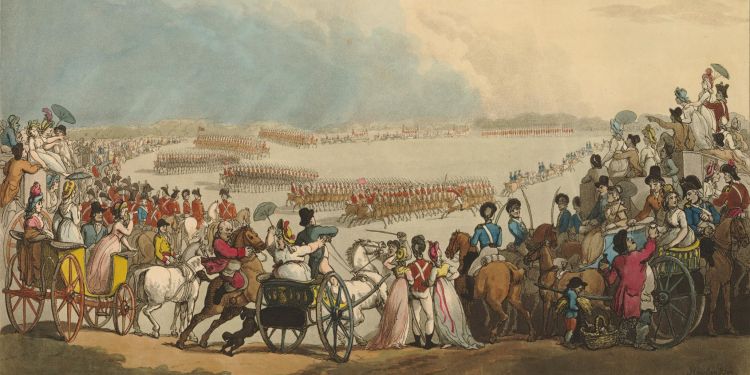Research project
Soldiers and soldiering in Britain, c.1750 to 1815
- Start date: 1 July 2010
- End date: 30 December 2011
- Funder: Arts and Humanities Research Council
- Primary investigator: Prof. Kevin Linch
- External co-investigators: Professor Matthew McCormack (University of Northampton)
Description
In the eighteenth century, Britain's soldiers were both heroes and the 'scum of the earth'. At a peak in the Napoleonic Wars, some 680,000 men were involved in some form of military service. Yet the experiences of these men is largely forgotten.
This project demonstrated that historians' conventional definition of 'the soldier' was too simplistic. Soldiering in the period 1750-1815 was often part-time, or a phase (or phases) in an individual's life. Furthermore, soldiering should also be considered as an identity and a model of conduct; models which soldiers themselves had an active role in creating through their lived experiences. These identities and behavioural codes had complex relationships with their civil counterparts: ideals such as gentility and politeness - quintessentially 'civil' models of masculinity - had important, and subtly different, roles to play in the military sphere.
Partners and collaborators
An important aspect of this project was bringing together a wide community of those interested in the subject of Britain's soldiers in the Eighteenth Century.
The project developed a variety of partnerships:
- 33rd Regiment of Foot Reenactment Society, who shared their expertise at the Britain’s Soldiers conference in July 2011.
- York Castle Museum, working together on militia and volunteer units.
- Hampshire Record Office and East Sussex Record Office, working together on the transcription and online publication of some of the records about military service.
Events
- ‘Defining Soldiers’ workshop: 21 January 2011
- Britain’s Soldiers 1750-1815 conference: 7-8 July 2011
Impact
The project focused on networking opportunities both online and in person. Over 150 people registered on the bespoke project website (no longer available) to use its discussion forums and interactive tools, of which 47% were members of the public and 46% were international. The project website included a digital repository of primary source material, from which users had downloaded items 100 times. The website was designed to encourage engagement in preparation for the conference, which was 39 people, with a mixture of academics, students, and non-academics. These networking opportunities were particularly appreciated and successful.
[The project] bought together not only academic staff, but also independent researchers and ‘amateurs’ (in the best sense of the word) in a very fruitful exchange, both on the website and at the conference.
Publications and outputs
- Matthew McCormack, ‘Supporting the Civil Power: Citizen Soldiers and the Gordon Riots’, The London Journal, 37.1 (2012), 27–41. Read more on the journal’s website (full text available).
- Kevin Linch and Matthew McCormack, ‘Defining Soldiers: Britain’s Military, c.1740-1815’, War in History, 20.2 (2013), 144–59. Read more on the journal’s website (subscription required).
- Britain’s Soldiers: Rethinking War and Society, 1715-1815, ed. by Kevin Linch and Matthew McCormack (Liverpool: Liverpool University Press, 2014). Read more on the publisher’s website.
Further links
- UK Gateway to Research page for the project
- Arts and Humanities Research Council


